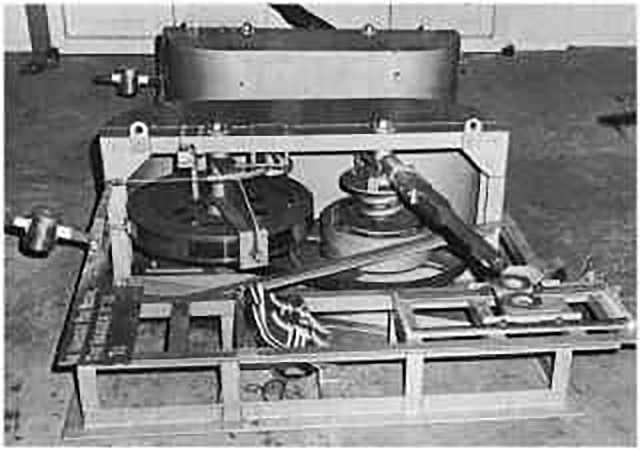Back in the 1980s, upon joining a Sydney rowing club, I was introduced to these 1960s, Australian-made rowing ergometers.

These all-metal ergometers weighed a ton and had a large cast steel fly wheel, which is chain-driven from a large sprocket attached through a centrifugal clutch to the “oar” handle. The wheel is accelerated during the drive phase but the chain-wheel freewheeled during the recovery.
Two friction pads applied pressure to the wheel to further add resistance. These pads were adjustable, to theoretically match the rower’s weight, by moving a cylindrical weight along a graduated lever arm, visible at the left, protruding beyond the rectangular metal frame, in the picture.
A mechanical counter (no electronics back then) was mounted near the lever arm to count the revolutions in a set time, often six minutes, as a relative measure of the work output of the rower.
The picture shows a stroke-side erg in the foreground, with a bowside one at the back.
My personal experience with these ergs was that they were much harder than the modern ergs and had less rowing “feel” to them. Whilst they did measure relative work output, the results were not always consistent across machines and environmental factors could affect results. Some rowers also claimed to use a special “erg” technique that supposedly returned better figures. They were, however, a fair indicator of performance if maintained and used under the same conditions.
Modern ergs are more efficient, more realistic and definitely much lighter and portable.
